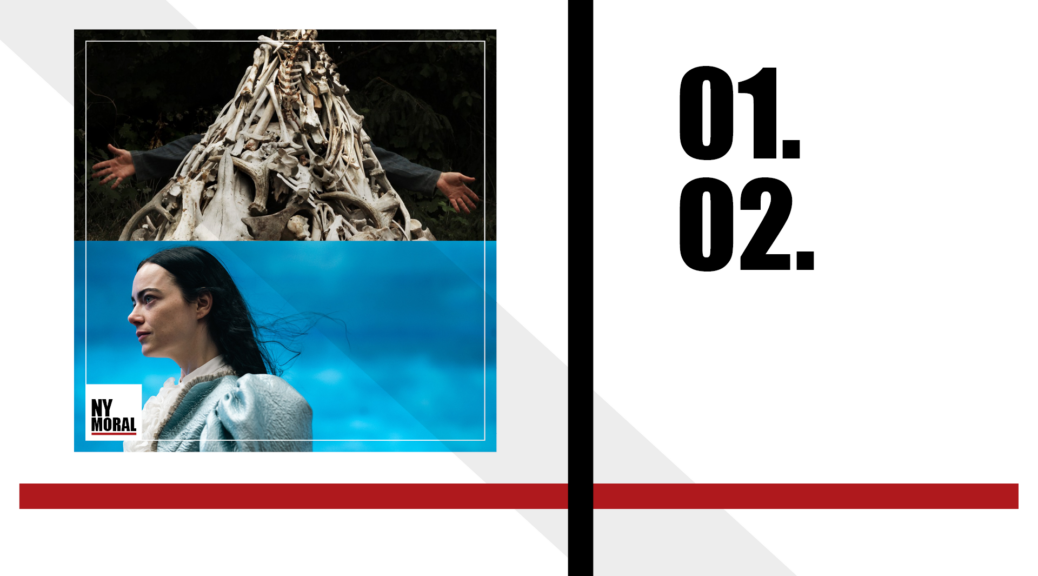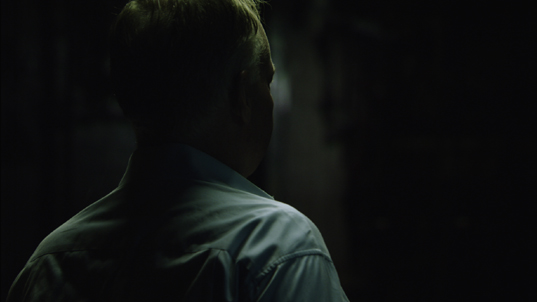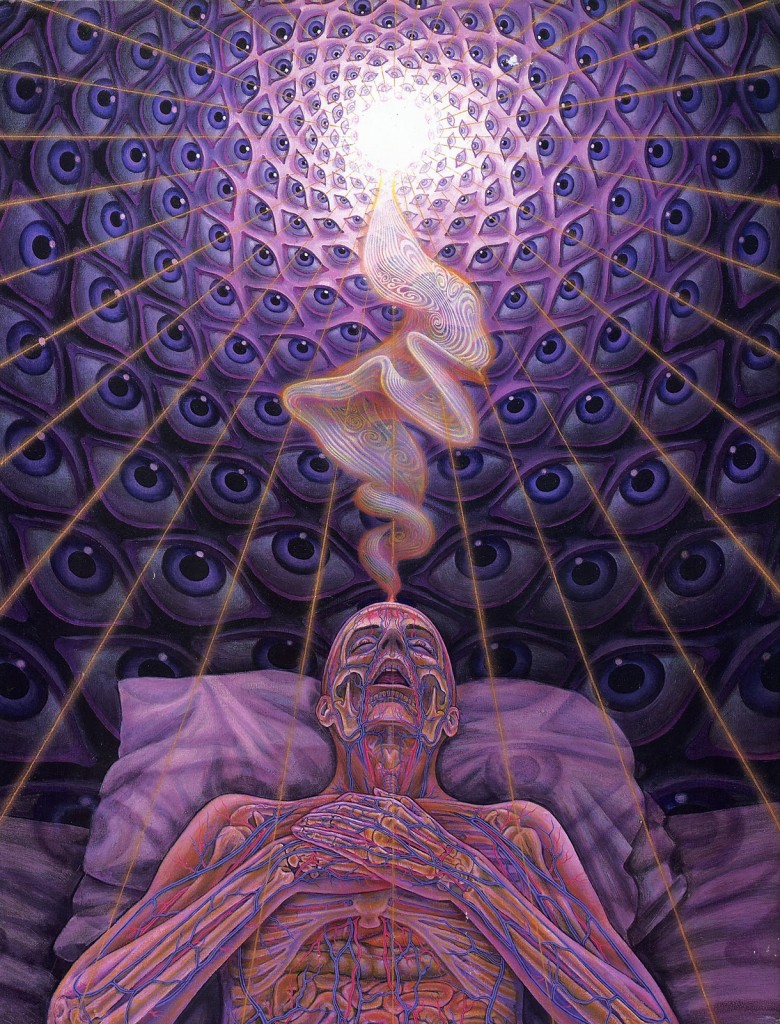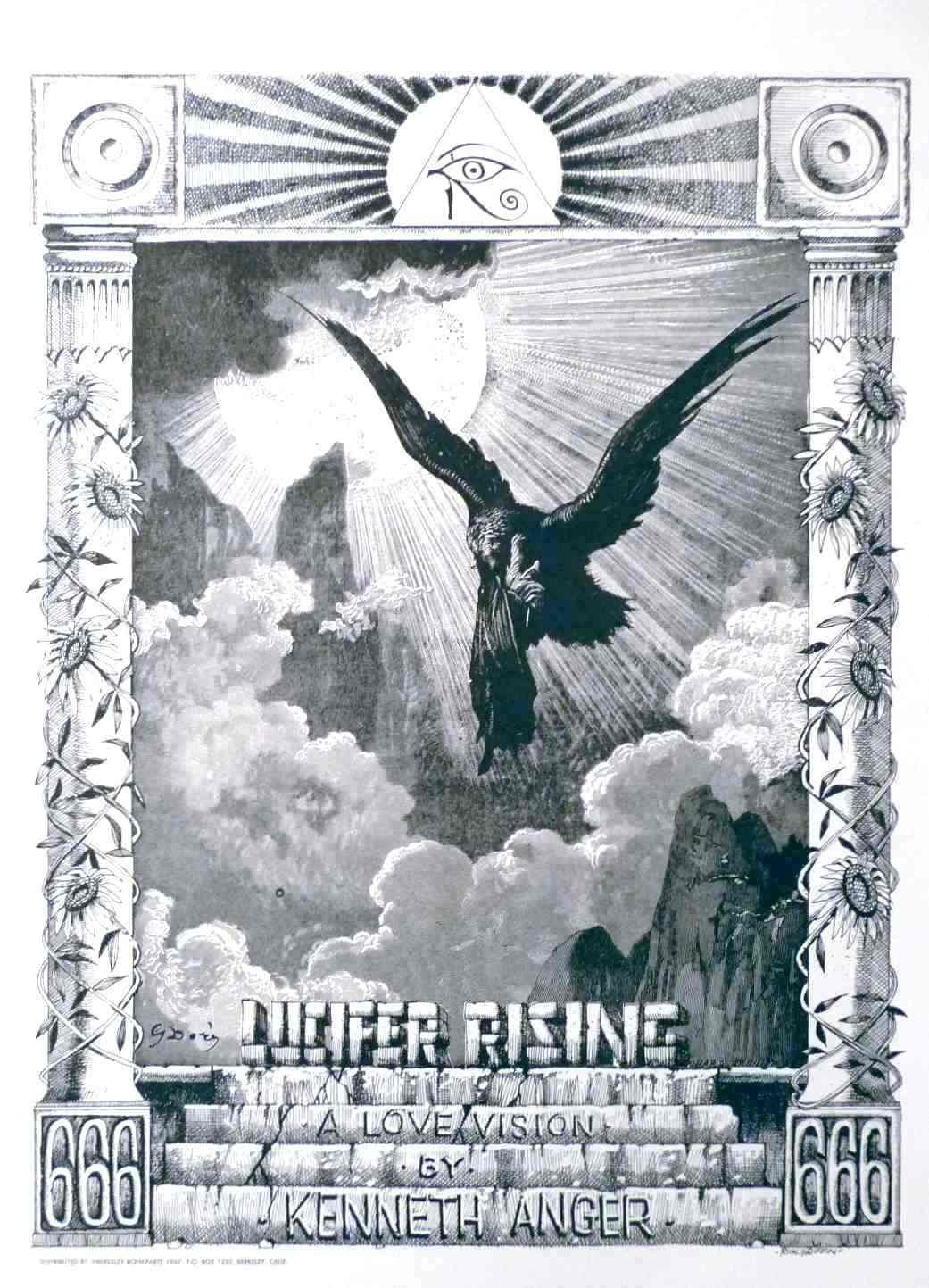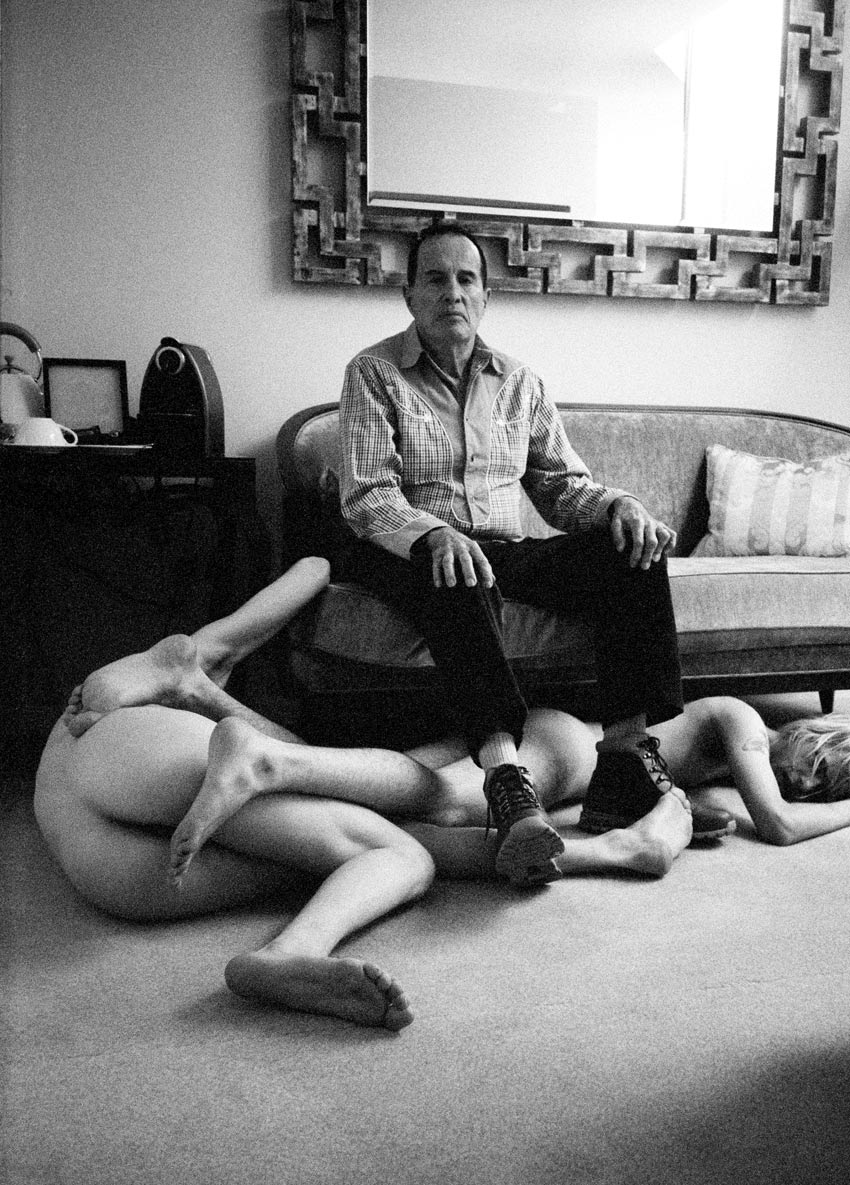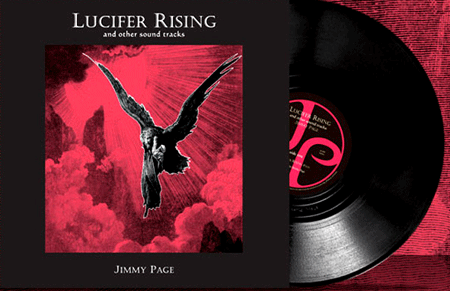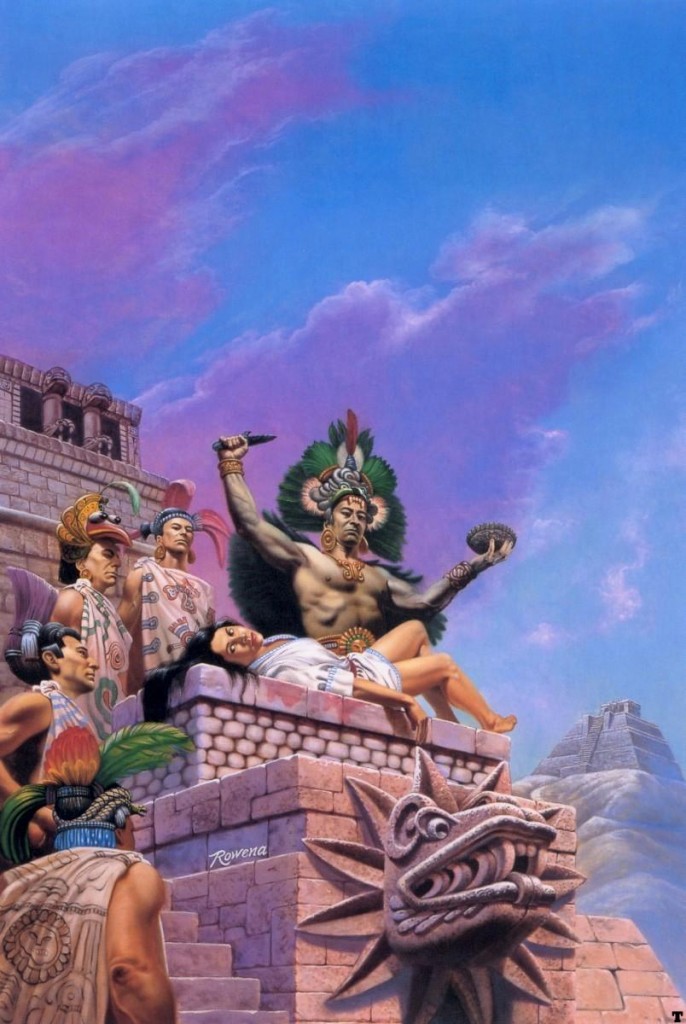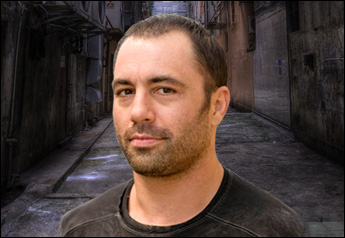Category Archives: philosophy
Love Flowers Best In Openness And Freedom
A meditation on the state of civilization and nature by Mattias Indy Pettersson

Edward Abbey (1927-1989) was an American author whose works reflect an uncompromising environmentalist philosophy. His love for the natural and his distrust of machines stayed with him until his death. He was buried as he had requested: in a sleeping bag, without a casket, in an unmarked desert grave somewhere in Arizona.
The title of this essay is a quote from Abbey’s ”Desert Solitaire: A Season in the Wilderness” (1968), a book that made me want to give up on civilization and retreat into nature. Too bad I’m such a self-made slave to this so called civilized living that I don’t even know how to start a fire without a lighter… I would probably not last a week in the wilderness. But I do love all things natural, it’s just that I’m super-civilized, i.e. lazy and brainless, and therefore unable to survive without my gadgets. Let’s explore why I am so stupid, and let’s start with a simple definition of the word ”nature”.
Nature: The natural world as it exists without human beings or civilization.
Our love for nature violently clashes with our love for civilization. Apparently, we can’t have both. Common sense is not common, and it takes experts to convince us of what we already know (this planet is deteriorating and so are we). Earth is our home, and what we do to it, we do to ourselves. We cannot live without Earth, but Earth will do just fine without us. Edward O. Wilson, biologist and researcher, once said that ”if all mankind were to disappear, the world would regenerate back to the rich state of equilibrium that existed ten thousand years ago. If insects were to vanish, the environment would collapse into chaos.”
Chaos: The confused unorganized state of primordial matter and infinite space before the creation of distinct forms.
Or, if we take it down a notch to a more human level:
A state of utter confusion, a total lack of order.
Civilization has been in a state of chaos for quite some time, so what else is new? Well, let’s talk about the aspect of time for a while. We’ve accomplished amazing things over the last couple of years. In the morning you get in your car, you drive through the city, you get on the subway, you scroll through your feeds on Facebook, Instagram, Twitter, and you subscribe to yet another podcast… It all seems normal, right? But it’s so far removed from every single aspect of our history. It’s so new, it’s so recent, this thing with cities and electronics, and it’s pretty far from a natural state.
Take a look at the nearest clock and understand that since this exact time yesterday, 13 million tons of toxic chemicals were released across the globe, and 200 000 acres of rainforest have been destroyed (an acre is approximately the same size as one football pitch or 16 tennis courts). Every two seconds a human being starves to death. Every day 150-200 animal and plant species are driven extinct. Every 90 seconds a child dies from a water-related disease. Civilization seems kind of bad. And even if those numbers aren’t 100 % correct at the time of writing, I think most of us understand that we’re in deep shit. The biodiversity crisis is real.
*

Lewis Mumford, historian and sociologist, defined civilization in his book ”The Myth of the Machine” (1967-70) as ”the group of institutions that first took form under kingship. Its chief features, constant in varying proportions throughout history, are the centralization of political power, the separation of classes, the lifetime division of labor, the mechanization of production, the magnification of military power, the economic exploitation of the weak, and the universal introduction of slavery and forced labor for both industrial and military purposes.”
Was Mumford cynical? Depends on whom you ask. Industrial civilization is destroying the planet and creating unprecedented human suffering. Do you agree? Maybe not wholeheartedly, but if you deny mankind’s destructive impact upon this Earth, you are not here. You are lost.
”How many more times will you watch the full moon rise? Perhaps twenty. And yet it all seems limitless.” Paul Bowles wrote that 1949 in ”The Sheltering Sky”.
”Woe to you, oh Earth and sea, for the Devil sends the Beast with wrath, because he knows the time is short.” Steve Harris wrote this adaptation of the Book of Revelations in ”The Number of the Beast” (1982).
Conclusion? The time aspect reveals what we’ve created in just the blink of an eye. Chaos. And compared to the time span of one full second, a blink of an eye is an eternity. Lots of chaos.
Derrick Jensen, philosopher: ”We have a social system based on the use of non-renewable sources. If you take more from your surroundings than you give back, sooner or later there will be nothing left. If fewer ancient forests stand each year than the year before, sooner or later none will stand.”
This is all very easy to understand. Cities, the defining feature of civilization, have always relied on taking resources from the surrounding countryside. Civilization thrives in artificially created environments, these huge urban centers that breed a mindless mob and suck the vitality out of the countryside. Spirituality starts in the open, transfers to the cities where it loses its gist and then dies in the megacities, engulfed in the flames of materialism.
Journalist Eduardo Galeano writes that ”the majority must resign itself to the consumption of fantasy. Illusions of wealth are sold to the poor, illusions of freedom to the oppressed, dreams of victory to the defeated and of power to the weak.” These are the central themes of modern political culture. How can this be a good thing? What have we made of ourselves?
Deep down, we know. Everybody knows that we’re in great need of new, sustainable systems to make this world a better place. Everybody knows that global hunger is man made and preventable. But these monumental problems are hardly being addressed at all. At least not by those in power, the responsible leaders who are able to make a difference. The power of the grassroots campaigns and small-scale activism is simply not enough, and we seem unable to grasp the magnitude of the challenges that face us.
Man will not live forever. Man will die off, it’s just a question of when, and I say the sooner the better. We know what’s wrong with us, so the question is: do we have the bravery to confront it? I think not. Therefore, the best humanity can hope for is to eventually be crushed by nature. I wish us all a peaceful, painless death when somebody finally pushes the button and closes the switch. Maybe, in a near future, all it will take is one click.
*

”The most merciful thing in the world, I think, is the inability of the human mind to correlate all its contents. We live on a placid island of ignorance in the midst of black seas of infinity, and it was not meant that we should voyage far. The sciences, each straining in its own direction, have hitherto harmed us little; but some day the piecing together of dissociated knowledge will open up such terrifying vistas of reality, and of our frightful position therein, that we shall either go mad from the revelation or flee from the deadly light into the peace and safety of a new dark age.”
H.P. Lovecraft, ”The Call of Cthulhu” (1928).
Technology most certainly will continue to develop at an exponential rate, as our development of sustainable agricultural and environmental issues lags behind. Some people claim that technology still lacks what separates tech from Man: a sense of morality, compassion, love, empathy… In my mind, I don’t see how we make good use of our morality, compassion, love and empathy. In my mind, we’ve forgotten everything about the soul, the spirits, and our emotions. There’s a spiritual void at the heart of our culture. Superhuman intelligence is all about the brain, and nothing about the soul, hence I see no difference between Man and Machine. The singularity is here.
Singularity: The state when humans will transcend the limitations of our biological bodies and brains. Where machine intelligence is more powerful than all human intelligence combined.
The way we use our mobile phones, activity wristbands and whatnot (or rather, the way technology uses us), tracking our every step even when we sleep, I’d say technology is already a part of our actual bodies. American terrorist and mathematics prodigy Theodore Kaczynski, known as the Unabomber (his early victims were associated with universities or airlines), was a man who lived for his idea, who was prepared to sacrifice everything for his idea, and especially everybody.
Dubbed ”the most intellectual serial killer the nation has ever produced” by one criminologist, his ideas about the evils of technology and his desire to leave civilization and escape into the wild ultimately drove him to murder. The Unabomber was active between 1978 and 1995, way before activity wristbands. Was his anti-technology philosophy sufficient to explain his crimes? Of course not. But let’s talk about violence.
Civilization is based on a rarely questioned hierarchy. Violence done by those up high to those down low is standard operating procedure, while reversing this structure is almost unthinkable. When violence from below occasionally strike against the upper elite it is regarded with shock, and stricken down hard by those in power, all according to the law of retaliation. ”And if ye will not yet for all this hearken unto me, then I will punish you seven times more for your sins.” (Leviticus 26:18). Violence has become the default of our culture.
*

”The Decline of the West”, is a two-volume tome written by historian and philosopher Oswald Spengler in 1918-1923. Spengler looks upon history as an organic cycle (rather than linear) that has to pass through the stages of Birth, Development, Fulfillment, Decay and Death. In the West we tend to look upon history as something always moving forward, evolving to the better. This, according to Spengler, is the result of the Western man’s ego, thinking that everything in the past pointed to him, making him the center of the world.
The cyclical movements of history are not those of nations, states, races and events, but of High Cultures, each and every one of equal importance. So when Spengler speaks of the decline of the West, he speaks of the decline of its culture. Thus, the people live on, but their culture is destroyed. The eight High Cultures so far are the Babylonian, Egyptian, Chinese, Indian, Mexican (Mayan/Aztec), Classical (Greece/Rome), Arabian and Western (European-American). These eight cultures have all had a life span of 1000 years, and every culture has collapsed. Why should ours be any different?
Spengler uses seasons as an analogy to elaborate. Spring is the birth of religion and where the basic principles of this culture are being formed. Summer is when acts of lasting value and great accomplishments are being made (this is the peak and the cultural prime). Autumn is when all this start to break down and turn into Winter. We’re there already, in the Kali Yuga.
Political propaganda is mistaken for ideology, feelings are mistaken for knowledge, science no longer reaches certainties. There is much cultural confusion, and the arts do not speak from or to the soul of the people, but rather follow materialistic fashion with lots of changes of styles, not asking much from neither the artist nor the people. Spengler is confident that after a moment of atheism the people will turn to a renewal of religion and spiritual faith, based on the religion developed in the Spring of the culture. And so we’ve entered what Spengler refers to as the Civilization phase which is – as opposed to the Culture phase we’ve just left behind – occupied with materialism, continual wars, mass movements of people, environmental crises, rootlessness and lack of vitality, strength and intellect.
The history of High Culture is the only history that counts, according to Spengler, because pre- and post-Cultural man is simply without history: as man plunges into materialism and advocates the degeneration of his mentality, he loses his historical weight.

Charles Eisenstein writes in ”Sacred Economics” (2011) about our culture’s notion of spirit as ”that of something separate and non-worldly, that yet can miraculously intervene in material affairs”, and concludes that this divine, godlike spirit of today is simply named Money; the hidden hand that directs and controls pretty much everything in our existence.
Wu-Tang Clan has a song, ”C.R.E.A.M.”, Cash Rules Everything Around Me, which the wolves of Wall Street surely cannot relate to. Cash? Most money don’t even exist in physical form. Most money is an abstraction disconnected from the real world.
Eisenstein on the early years of the 21st century economic crises: ”Looking down from Olympian heights, the financiers called themselves ‘masters of the universe’, channeling the power of the god they served to bring fortune or ruin upon the masses, to literally move mountains, raze forests, change the course of rivers, cause the rise and fall of nations. But money soon proved to be a capricious god.
As I write these words, it seems that the increasingly frantic rituals that the financial priesthood uses to placate the god money are in vain. Like the clergy of a dying religion, they exhort their followers to greater sacrifices while blaming their misfortunes either on sin (greedy bankers, irresponsible consumers) or on the mysterious whims of God (the financial markets). Soon, perhaps, we will blame the priests themselves.
What we call deflation, an earlier culture might have called, ‘God abandoning the world’. Money is disappearing, and with it a third property of spirit, the animating force of the human realm. [Money …], so insubstantial (in the form of electrons in computers) that it can hardly be said to exist at all, yet so powerful that without it, human productivity grinds to a halt. It is as if God had forsaken the world.”
He continues:
”We do not realize that our concept of the divine has attracted to it a god that fits that concept, and given it sovereignty over the earth. By divorcing the soul from the flesh, spirit from matter, and God from nature, we have installed a ruling power that is soulless, alienating, ungodly and unnatural.”
Our children will have to pay. They are the ones being left with the pollution, the wreckage, the ruin, the debt and the collapse of human industrial civilization. Our children will look up and whisper ”no”…
*
Edward Abbey again:
”…I go outside and close the switch on the generator. The light bulbs dim and disappear, the furious gnashing of pistons whimpers to a halt. Standing by the inert and helpless engine, I hear its last vibrations die like ripples on a pool somewhere far out on the tranquil sea of desert, somewhere beyond Delicate Arch, beyond the Yellow Cat badlands, beyond the shadow line. I wait.
Now the night flows back, the mighty stillness embraces and includes me; I can see the stars again and the world of starlight. I am twenty miles or more from the nearest fellow human, but instead of loneliness I feel loveliness. Loveliness and a quiet exultation.”
So let’s gently close the switch on civilization and let nature prevail. Don’t worry, it’ll be beautiful. Everything will be fine once we are all gone.
//
This essay is part of EVERYTHING WILL BE FINE ONCE WE ARE ALL GONE, a so-called self published artist’s book, created by Björn Engberg 2017. Proofread by Hannes Rubaszkin. Photos by Björn Engberg.
The Holy Mountain – Part One
Alejando Jodorowsky‘s The Holy Mountain (1973) is one of my all time favourites. It’s about symbolism, mainly focused on spirituality and the occult, death, rebirth, mysticism and the extramundane, but also on capitalist production, militarism and the absurd. The visual vocabulary is unique and absolutely stunning. Press pause in any frame at any time throughout the whole film, and you will get an image that constitutes the most amazing art. After all, Jodorowsky was trying with all his soul to make a sacred film. He wanted to change mankind with it, make it a source of enlightenment for the audience, and he believed that cinema was better than LSD…
The Holy Mountain has certainly changed me and the way I look at things, and most importantly the way I look at movies. In my eyes, this is pure gold/excrements. It operates on so many levels and is filled with so much detail, I believe you need to experience it several times to grasp its universal themes. Knowledge of the occult, religion and its’ most basic symbols is essential for understanding. Sometimes it comes out deep as fuck, and sometimes it does not (to put it simply, haha!)… That’s what I love with this piece of art: It rules even when it sucks!
These posts are based on Jodorowsky’s commentary track for the Anchor Bay DVD edition, as well as the book The Spiritual Journey of Alejandro Jodorowsky. You may want to watch the movie while you read this text, and hopefully, a deeper kind of understanding will emerge on your highway to hell/nirvana or whatever you may fancy.
Here are the first three minutes of the film, as explained by Jodorowsky in the commentary track:
First, a set decorated without furniture. It’s clean, like a hospital, with crosses on the wall to convey a sense of mysticism. There are only essential objects, like a sacred ceremony. The master’s outfit conceals his face. He hides his face, like Mohammed. He is an essential being, without ego.
These are the actual movements of a Japanese tea ceremony. All the movements are conscious.
These two girls weren’t actresses. They wanted to have a spiritual experience. They were searching for their own truth, their naked truth.
[the camera sweeps across different images]
The inner God that opens in circles towards a greater consciousness.
A heart that opens towards a greater consciousness.
The target that the arrow must hit.
The eye of Buddha.
The pearl, the soul that must be polished.
When the door is opened, a key is found with the trilogy.
Now, descend into the world of the dead, to the world of the dreamless dreams.
Descending…
Butterfly wings symbolize metamorphosis.
Back up through the serpent, Kundalini… the pearls of Eros, until it arrives at a geometric figure, which is the interior consciousness.
After this three minute introduction filled to the brim with symbols of the occult, we meet the protagonist, the Christ like figure, the Thief, lying on the ground, and who through the course of the film will experience moments of enlightenment. Jodorowsky continues:
He’s ”The Fool” of the tarot. His face is covered with flies, symbolizing useless thoughts. He is urinating on himself. He’s drunk and lost. This is the card that defines him, the tarot’s Fool card. The Fool is always represented by an animal that is his ego. The frog is the ego.
To be continued in Part Two.
The World Tomorrow
It must be considered impossible to solve the position we’ve placed ourselves in. The level of humanity’s consciousness is way too low. Our children will have to pay. They are the ones being left with the pollution, the wreckage, the ruin, the debt and the collapse of human industrial civilization. That’s not pessimism, but realism. Consider this: What if realists were in charge of U.S. foreign policy?
Now all the gods are dead, except the god of war. And the god of war is money.
Charles Eisenstein, in Sacred Economics, states:
Our culture’s notion of spirit is that of something separate and non-worldly, that yet can miraculously intervene in material affairs, and that even animates and directs them in some mysterious way.
It is hugely ironic and hugely significant that the one thing on the planet most closely resembling the forgoing conception of the divine is money! It is an invisible, immortal force that surrounds and steers all things, omnipotent and limitless, an ‘invisible hand’ that, it is said, makes the world go ’round. Yet, money today is an abstraction, at most symbols on a piece of paper, but usually mere bits in a computer.
[…]Money’s divine property of abstraction, of disconnection from the real world of things, reached its extreme in the early years of the 21st century as the financial economy lost its mooring in the real economy and took on a life of its own. The vast fortunes of Wall Street were unconnected to any material production, seeming to exist in a separate realm.
Looking down from Olympian heights, the financiers called themselves ‘masters of the universe’, channeling the power of the god they served to bring fortune or ruin upon the masses, to literally move mountains, raze forests, change the course of rivers, cause the rise and fall of nations. But money soon proved to be a capricious god. As I write these words, it seems that the increasingly frantic rituals that the financial priesthood uses to placate the god money are in vain. Like the clergy of a dying religion, they exhort their followers to greater sacrifices while blaming their misfortunes either on sin (greedy bankers, irresponsible consumers) or on the mysterious whims of God (the financial markets). Soon, perhaps, we will blame the priests themselves.
What we call deflation, an earlier culture might have called, ‘God abandoning the world’. Money is disappearing, and with it a third property of spirit, the animating force of the human realm. At this writing, all over the world machines stand idle. Factories have ground to a halt, construction equipment sits derelict in the yard. Yet all the human and material inputs to operate them still exist. There is still fuel, there are still raw materials, and there are still human beings in abundance who know how to operate the machines. It is rather something immaterial, that animating spirit, which has fled. What has fled is money. That is the only thing missing, so insubstantial (in the form of electrons in computers) that it can hardly be said to exist at all, yet so powerful that without it, human productivity grinds to a halt. It is as if God had forsaken the world.
Even beyond the mechanical realm, we can see the demotivating effects of lack of money. Consider the stereotype of the unemployed man, nearly broke, slouched in front of the TV in his undershirt, drinking a beer, hardly able to rise from his chair. Money, it seems, animates people as well as machines. Without it we are dispirited.
We do not realize that our concept of the divine has attracted to it a god that fits that concept, and given it sovereignty over the earth. By divorcing the soul from the flesh, spirit from matter, and God from nature, we have installed a ruling power that is soulless, alienating, ungodly and unnatural.
Obviously, God must be killed. Watch Michael C. Ruppert’s speech about this (it’s edited with pompous music, new age imagery etc, but as always: listen to the message, ignore the cosmetics).
In a world where almost every news channel is owned by major Western corporations and governments, Julian Assange’s TV-show The World Tomorrow might bring something new to the table. Yep, it’s run by Russia Today, which is funded by the Russian state, but there still is a difference.
And yeah, Assange’s ”show” looks and behaves like an amateur video podcast, but of course, looks are completely irrelevant. Idiots will always have a hang up on Assange’s haircut, his smile, the way he speaks or whatever, but don’t bother with idiots – it’s the message that counts. Assange is executing what mainstream media so often fails to do: he breaks stories, lets interesting people talk, tries to find the missing link, exposes the truth and the lies. At least with Wikileaks. As for the show, it’s too early to tell.
Unfortunately, the program is much too short. Episode #2 would have been much better if David Horowitz (Zionist) and Slavoj Žižek (Communist) could’ve talked for one or two hours, instead of 25 minutes. But I guess that’s because the platform is owned by Russia Today, and after all, it’s supposed to be a TV-show, not a video podcast.
Still, it’s great compared to the totally worthless debates on national television in Sweden. They cram twenty people together in a studio, everybody’s talking over the top of each other, it’s just mindless and meaningless to watch. Mainstream media really, really sucks. Sure, every now and then there are good articles to be found even in the crappiest of papers, but if you want the real deal you have to go somewhere else. The World Tomorrow might be a good place to start, even though they seem to be struggling with the same problems as mentioned above. Just look at Horowitz and Žižek going crazy in the studio! At least they’re trying…
However, as people start to dig a bit deeper than Dagens Nyheter and The Guardian, the power freaks are trying to take control over the Internet with PIPA, SOPA, ACTA, CISPA, FRA, Datalagringsdirektivet… You know how it goes. If people had paid more attention to The Pirate Party we probably wouldn’t be so utterly fucked already. Now it’s pretty damn close to 1984, and we won’t even realize it until we’re cut off. And not even then will we do anything about it. That’s the sad but true story of humanity right there. We know what’s wrong, but we’re too fucked to care. We might have heard about CISPA in the news, but we don’t bother to check what it’s all about. In so many ways, we truly deserve this collapse.
The World Tomorrow might not be the most balanced show on earth, but at least it’s something different, working to make a change. Hopefully Assange and Russia Today will have the courage and honesty to invite their ”enemies” as well, further on.
Let’s start looking at the puppet masters – for real – and stop being their puppets.
Ayahuasca – The Vine of Death
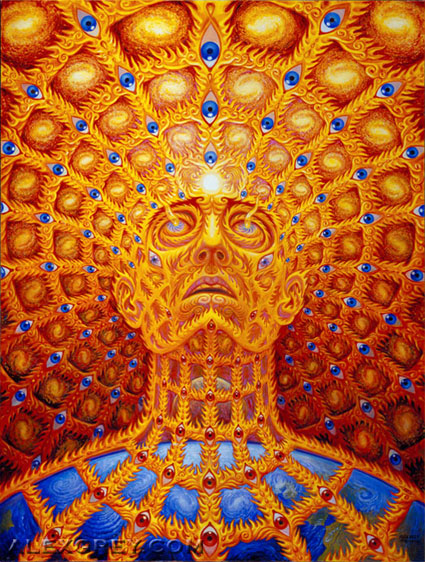
It’s obvious that the war on drugs is not about protecting people from harmful substances. If it was, then alcohol, cigarettes, and maybe even coffee (can you imagine an office in Western society where you can’t get coffee?), would definitely be illegal. Those are highly addictive and harmful substances, but they’re still very much promoted by society. Nothing wrong with that, really, since we should be able to decide for ourselves what to do with our bodies, but the hypocrisy is fascinating, and the anti-drug propaganda is still as mindless as it’s always been. So, the war is clearly about controlling the cash flow, and ultimately controlling what people think. In other words, it’s about capitalism.
I’ve been following The Joe Rogan Experience podcast off and on since 2010, and some of the most interesting shows have been about exploring the human mind with the help of meditation, floatation tanks, weed and hallucinogens. It’s basically dealing with how little we really know about ourselves and the universe. Then there’s the Ayahuasca experience, which is taking it to the next level.
The Ayahuasca experience seems to be most rewarding when it comes to getting to terms with yourself, but it also seems to be extremely challenging and scary as hell. This is not something you do for fun to spice up your boring party, and it’s certainly not about fake new age imagery either. Faking to be spiritual is actually preventing you from being spiritual, as Chris Marcus says in episode #127 of The Joe Rogan Experience, and Ayahuasca will make you feel like shit for real, so no use in faking there.
Art by Alex Grey – alexgrey.com
The big problem, as with anything that gets exploited and hyped up, seems to be to find the real deal. People are keen to take your money, but they might have no interest in the plant or the experience, and according to those who know, this could be disastrous. Ayahuasca tourism has been in full effect for a couple of years already, and it’s probably getting worse as more and more people discover its potential.
––––––––––
There’s a vast amount of information about Ayahuasca on the internet, of course. Here are some of the resources I’ve found particularly useful when trying to figure out what it’s all about:
Documentaries
Manifesting the Mind (2011) – A great introduction to psychedelics.
DMT: The Spirit Molecule (2010) – A film based on Dr. Rick Strassman’s book with the same name, where he explores the effects of DMT. His research was approved by the U.S. government.
Video podcasts
The Joe Rogan Experience #127, August 3 2011 – Part 1 – Part 2
The Ayahuasca experience of Aubrey Marcus, who went to Peru for the real deal with the shamans. I’d been reading a bit about Ayahuasca before, but this is what got me really interested.
London Real, March 18 2012 – Ready to Die
A really cool video podcast inspired by The Joe Rogan Experience.
“Brian Rose & Nic Gabriel talk about their upcoming retreat with Ayahuasca, the controversial hallucinogen and ‘Plant Teacher’. After spending 10 days on a rigorous diet of no sugar, salt, caffeine, alcohol, drugs, wheat, red meat, dairy, soy or spices, they discuss their anxiety and anticipation about the upcoming experience and how it will change their lives.”
While Joe Rogan totally rule, he might be a bit too talkative, interrupting his guests a bit too often and straying away from the subject only to return twenty minutes later, which kind of annoys me at times. Brian and Nic are quite mild in their approach, and their show is about an hour long (The JRE may last up till three hours). London Real is well worth watching!
London Real, March 28 2012 – Back from the Dead
”Brian Rose & Nic Gabriel talk about the fear, anxiety, anticipation, and excitement of their first Ayahuasca retreat in the UK and how they felt physically, emotionally, and spiritually before, during, and directly after ingesting the “Plant Teacher.” They detail the logistics of the actual ceremony and describe the sensations felt hour-by-hour as the medicine traversed their bodies and conclude with individual life lessons drawn from the experience.”
Graham Hancock on Ayahuasca and Consciousness,
The great writer and journalist Mr. Hancock is hooked on Ayahuasca. Here he tells his story to Sonia Doubell.
The Joe Rogan Experience #195, March 13 2012
Aubrey Marcus again. This time he’s been to Costa Rica, getting crazy with Ibogaine, which is even tougher than Ayahuasca.
London Real, April 30 2012 – The Secret Bliss
Brian and Nic talking to the above mentioned Sonia Doubell about her Ayahuasca experience, meditation and more.
Lucifer Rising – A Love Vision
Kenneth Anger‘s Lucifer Rising (1972) must be one of the most ambitious independent films made to date. It took over eleven years to complete, with locations spanning the temples of Karnak and the pyramids of Giza in Egypt to Germany’s Black Forest to Stonehenge, as well as India, Iceland, and lots of locations in the United States. Knowing that Anger chose to work mostly by himself, controlling all aspects of film production (his ability to direct, light, photograph, costume, create props, edit and produce is legendary) and working with an extremely modest budget, most of it self-financed, the end result is nothing but astonishing.
The visual inspiration must be traced to Aleister Crowley‘s poem Hymn to Lucifer, which in turn recalls John Milton’s epic poem Paradise Lost (1667). Lucifer is, in both Milton’s, Crowley’s and Anger’s eyes, the representation of beauty and light, the light bearer, the morning star, and so forth… In Gnostic myth, Lucifer was/is a pre-Judeo-Christian deity, identified with the fallen angel cast out of Heaven. The Gnostics worshipped Lucifer as the Herald of the Dawn, the light preceding the sun. This myth was then suppressed by the Catholic Church.
Marquis de Sade held that it was evil that was man’s prime motivation toward pleasure. Baudelaire tried to ”extract beauty from evil”, as did Milton in Paradise Lost and Dante in The Divine Comedy. It was in this symbolic context that Kenneth Anger found inspiration, and as early as 1954, in Inauguration of the Pleasure Dome, Anger explored different psychedelic states of consciousness. In a way, Lucifer Rising is ”with its themes of demonic possession expressed through the loss and recovery of psychic and physical power” (Alice L. Hutchison, Kenneth Anger) the ultimate of Anger’s manifestations, sort of stating that all these themes – the journey, the quest, the beauty, the darkness, the sublime and the psychedelic experience – are related. It’s the perfect combination of everything and nothing – showing another existence different from rational awareness. It’s like dreams that ”attempt to bring order to the unruly emotions and desires repressed by the social constraints of everyday life” (Hutchison). Anger himself consider Lucifer Rising to be the one film, alongside Scorpio Rising (1964), that came closest to his vision.
Robert Haller: ”To watch the film is to become intensely aware of the kinds and qualities of light, of its presence and absence, of its force.”
Before the film’s completion, Anger had this to say:
”The film Lucifer Rising is my answer to Scorpio Rising – which was a death mirror held up to American Culture. […] I call it a love vision, and it’s about love – the violence as well as the tenderness… […] Lucifer is the Rebel Angel behind what’s happening in the world today. His message is that the ‘Key of Joy is Disobedience’.”
When done filming, but not editing:
”Frankly, it’s taken me into some very strange corners… You see, I didn’t think it was about demons or hell, really. I was trying to make a film about the Angel of Light. That was his first name. The Son of the Morning, you see. But now I almost believe what the Bible says.”
Kenneth Anger’s interest in sound led to experimental collaborations with Mick Jagger (creator of the soundtrack for Invocation of My Demon Brother (1969)), Marianne Faithfull (who starred in Lucifer Rising), Jimmy Page (who began composing for Lucifer Rising, but got fired) and the infamous Bobby Beausoleil (whose music appeared in the final re-edited version of Lucifer Rising). Anger argued that rock’n’roll embodied the rebellious spirit of the times.
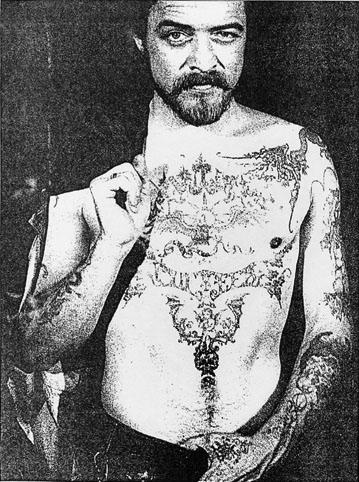 As for Lucifer Rising, Anger had 17 hours of film and had been using the film-editing facilities in the basement of Jimmy Page’s Victorian mansion in London to trim it down. One night Anger was ordered by Page’s girlfriend to leave the house. No reason was given for his eviction, and his work was terminated, and so was Jimmy Page’s work on the soundtrack. The media reports of these events led to Beausoleil contacting Anger about making music for the film. Since Beausoleil was held captive in prison for his involvement with the Charles Manson murders, the instruments were delivered by mail order and Anger provided him with the time-sheet for the film. The result is amazing. That Bobby Beausoleil’s last name is roughly translated to ”beautiful sun” is yet another detail related to the concept of light.
As for Lucifer Rising, Anger had 17 hours of film and had been using the film-editing facilities in the basement of Jimmy Page’s Victorian mansion in London to trim it down. One night Anger was ordered by Page’s girlfriend to leave the house. No reason was given for his eviction, and his work was terminated, and so was Jimmy Page’s work on the soundtrack. The media reports of these events led to Beausoleil contacting Anger about making music for the film. Since Beausoleil was held captive in prison for his involvement with the Charles Manson murders, the instruments were delivered by mail order and Anger provided him with the time-sheet for the film. The result is amazing. That Bobby Beausoleil’s last name is roughly translated to ”beautiful sun” is yet another detail related to the concept of light.
Kenneth Anger made his first movie when he was nine years old. When Scorpio Rising was released in 1963 it became the most viewed underground film in history. Anger still didn’t have enough money to truly realize his grand visions, and was unable to complete most of them. ”Money has always been a problem, and it made me give up on a lot of projects”. One of these movies that to my knowledge is still unfinished is a portrait if his friend Elliot Smith. He also made plans for a documentary about the German colony Nueva Germania in Paraguay, which was founded by Nietzsche‘s sister Elisabeth Förster-Nietzsche. According to Anger the place holds a lot of inbreds…

Still to this day, at the age of 85, Anger refers to himself as a thelemite, a follower of the spiritual philosophy Thelema developed by Aleister Crowley. In the 1940’s, Anger started to collect Crowley books and manuscripts, and obviously his collection is huge (probably not as huge as that of Jimmy Page, though, whose collection is rumoured to be the second largest in the world. Page also owns Crowley’s former residence at Boleskin, Loch Ness).
By the way, the Jimmy Page soundtrack is available again, remixed and all that, along with other soundtracks on this beautiful album:
Blood and Time at the End of the World
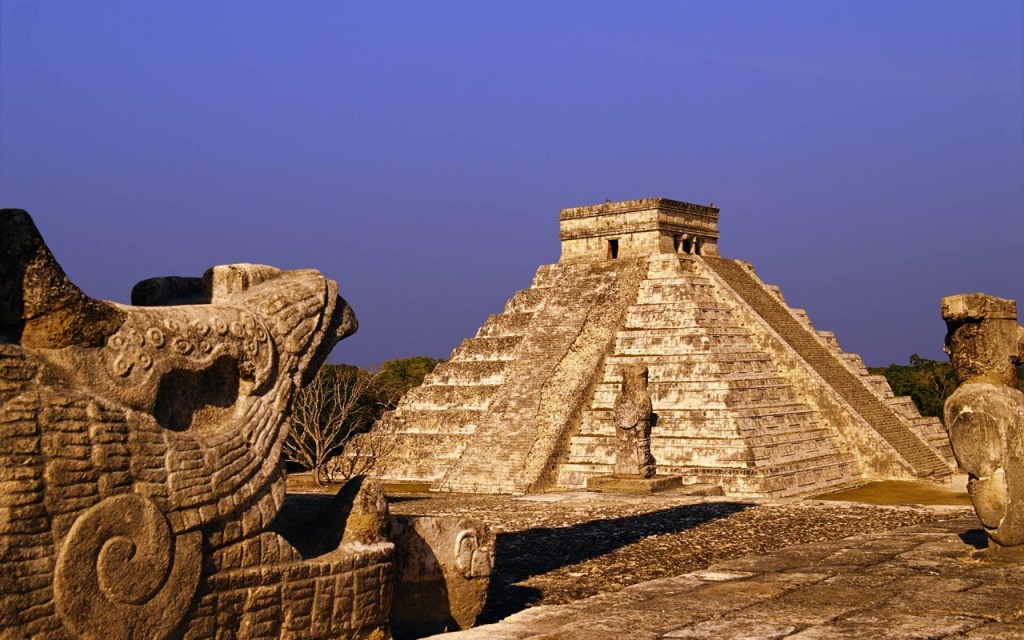
The Temple of Kukulkan seen from the Temple of the Warriors.
—
Chichen Itza, northern Yucatan, Mexico
“Behind me, towering almost 100 feet into the air, was a perfect ziggurat, the Temple of Kukulkan. Its four stairways had 91 steps each. Taken together with the top platform, which counted as a further step, the total was 365. This gave the number of complete days in a solar year. In addition, geometric design and orientation of the ancient structure had been calibrated with Swiss-watch precision to achieve an objective as dramatic as it was esoteric: on the spring and autumn equinoxes, regular as clockwork, triangular patterns of light and shadow combined to create the illusion of a giant serpent undulating on the northern staircase. On each occasion the illusion lasted for 3 hours and 22 minutes exactly.
(Check video here)
[…]
I passed by and made my way to the foot of the steep steps that led up to the adjacent Temple of the Warriors.
At the top of these steps, becoming fully visible only after I had begun to ascend them, was a giant figure. This was the idol of Chacmool.
[…]
Weighing on my mind was the unforgettable fact that the ritual of human sacrifice had been routinely practised here in the pre-Colombian times. The empty plate that Chacmool held across his stomach had once served as a receptacle for freshly extracted hearts. ‘If the victim’s heart was to be taken out’, reported one Spanish observer in the sixteenth century, ‘they conducted him with great display … and placed him on the sacrificial stone. Four of them took hold of his arms and legs, spreading them out. Then the executioner came, with a flint knife in his hand, and with great skill made an incision between the ribs on the left side, below the nipple; then plunged in his hand and like a ravenous tiger tore out the living heart, which he laid on the plate…’
What kind of culture could have nourished and celebrated such demonic behaviour? Here, in Chichen Itza, amid ruins dating back more than 1200 years, a hybrid society had formed out of intermingled Maya and Toltec elements. This society was by no means exceptional in its addictions to cruel and barbaric ceremonies. On the contrary, all the great indigenous civilizations known to have flourished in Mexico had indulged in the ritualized slaughter of human beings.
Slaughterhouses
Villahermosa, Tabasco Province
I stood looking at the Altar of Infant Sacrifice. It was the creation of the Olmecs, the so-called ‘mother-culture’ of Central America, and it was more than 3000 years old. A block of solid granite about four feet thick, its sides bore reliefs of four men wearing curious head-dresses. Each man carried a healthy, chubby, struggling infant, whose desperate fear was clearly visible. The back of the altar was undecorated; at the front another figure was portrayed, holding in his arms, as though it were an offering, the slumped body of a dead child.
The Olmecs are the earliest recognized high civilization of Ancient Mexico, and human sacrifice was well established with them. Two and a half thousand years later, at the time of the Spanish conquest, the Aztecs were the last (but by no means the least) of the peoples of this region to continue an extemely old and deeply ingrained tradition.
They did so with fanatical zeal.
It is recorded, for example, that Ahuizotl, the eight and most powerful emperor of the Aztec royal dynasty, ‘celebrated the dedication of the temple of Huitzilopochli in Tenochitlan by marshalling four lines of prisoners past teams of priests who worked four days to dispatch them. On this occasion as many as 80,000 were slain during a single ceremonial rite.
The Aztecs liked to dress up in the flayed skins of sacrificial victims. Bernardino de Sahagun, a Spanish missionary, attended one such ceremony soon after the conquest:
‘The celebrants flayed and dismembered the captives; they then lubricated their own naked bodies with grease and slipped into the skin … Trailing blood and grease, the gruesomely clad men ran through the city, thus terrifying those they followed … The second-day’s rite also included a cannibal feast for each warrior’s family.’
Another mass sacrifice was witnessed by the Spanish chronicler Diego de Duran. In this instance the victims were so numerous that when the streams of blood running down the temple steps ‘reached bottom and cooled they formed fat clots, enough to terrify anyone’. All in all, it has been estimated that the number of sacrificial victims in the Aztec empire as a whole had risen to around 250,000 a year by the beginning of the sixteenth century.
What was this manic destruction of human life for? According to the Aztecs themselves, it was done to delay the coming of the end of the world.”
—
The above text is an excerpt from Fingerprints of the Gods by Graham Hancock.
—
Joe Rogan of UFC fame has a brilliant podcast, and one of the most interesting so far featured Graham Hancock. Check it out here: The Joe Rogan Experience – Episode #142
Other podcasts of interest:
The JRE – Episode #170 Michael Ruppert (check the Collapse post for more info)
The JRE – Episode #173 Peter Joseph from the Zeitgeist movement
The JRE – Episode #127 Part 1 Chris Marcus about Ayahuasca
The JRE – Episode #127 Part 2 …and a bit about DMT as well
Also check The Joe Rogan Database for a quick overview of all the podcasts. At the time of writing there are 192 podcasts to browse through. Phew… Too much blood, not enough time.
